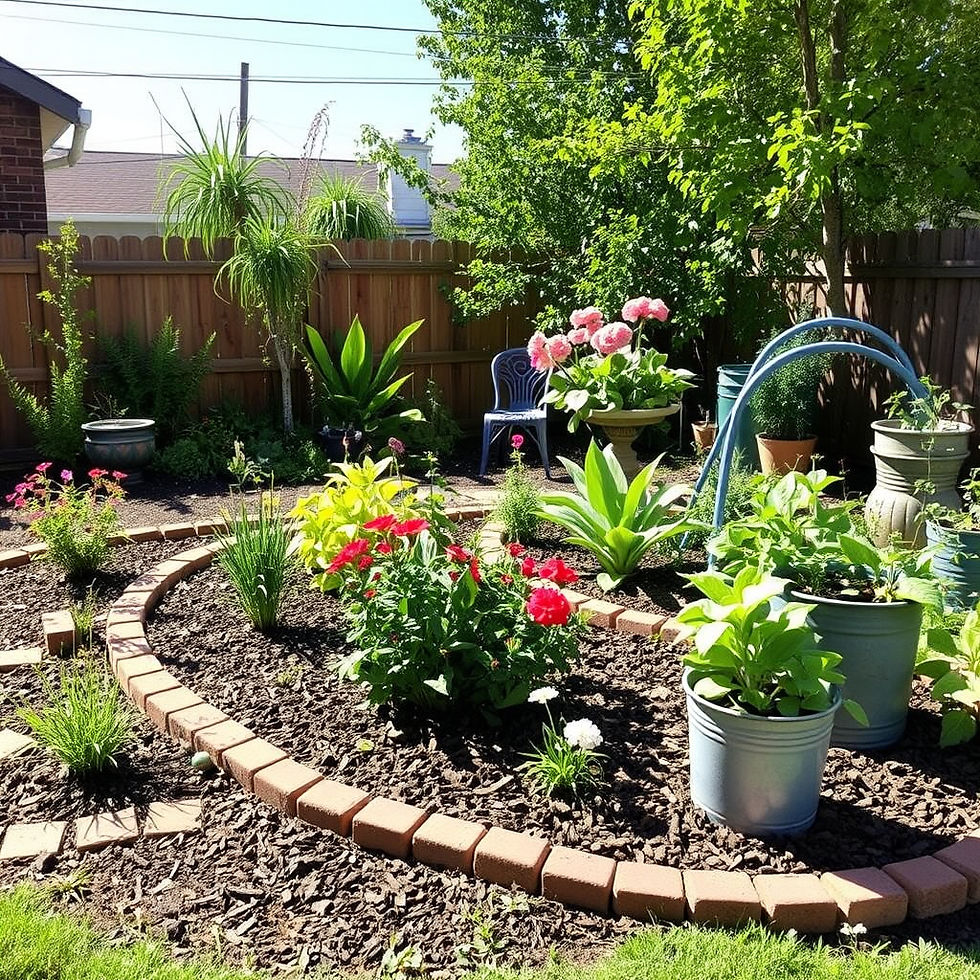Attract Pollinators Without Weeds: Tips for a Bee-Friendly Native Garden
- dotday_gardener
- Oct 9
- 4 min read
Creating a beautiful garden that attracts pollinators while minimizing the hassle of weeding is a dream come true for many eco-gardeners. The secret lies in employing strategies that enhance biodiversity and create a sustainable environment. In this post, we’ll show you how to Attract Pollinators to your garden without the weeds using native plants, garden fabric, and layout tips. Buckle up for some practical, bee-friendly garden advice!
Why Pollinators Matter
Pollinators are essential for the health of our ecosystems. They play a crucial role in the reproduction of many flowering plants, which in turn supports the food chain. Not only do pollinators, like bees and butterflies, help plants reproduce, but they also contribute to the diversity of our gardens and landscapes.
However, these vital creatures are facing challenges due to habitat loss, pesticide use, and climate change. Creating a pollinator garden can be a fantastic way to support local populations, and doing so without dealing with pesky weeds makes it even easier.
Establishing a pollinator-friendly garden can enhance your outdoor space, attract beneficial insects, and yield vibrant blooms. But how do we do all this without the constant battle against weeds? Let's dive into the strategies!

Weed-Free Native Planting Strategies
The foundation of an effective pollinator garden lies in choosing the right plants. Native plants are well-adapted to your local climate and specifically attract native pollinators. Additionally, they generally require fewer resources to maintain.
1. Selecting Native Species:
Choose a variety of native flowering plants that bloom at different times throughout the growing season. This ensures that there are always blossoms available for pollinators. Some great native options for your garden include coneflowers, milkweed, and black-eyed Susans.
2. Plant in Clusters:
Planting native plants in groups helps create an inviting and recognizable area for pollinators. Instead of scattering plants throughout your garden, cluster them in sections. This makes it easier for pollinators to find food sources.
3. Maintain Healthy Soil:
Healthy, nutrient-rich soil allows native plants to establish themselves more effectively. When plants are healthy, they are less likely to be overrun by weeds. You can improve soil health by incorporating organic matter, such as compost, into your garden beds.
Garden Fabric for Pollinator Spaces
One of the most effective ways to minimize weeds while attracting pollinators is the use of garden fabric or mulch. A well-laid garden fabric can reduce weed growth significantly while still allowing essential nutrients, moisture, and air to pass through. Here are some tips on how to use garden fabric effectively:
1. Prepare Your Garden Area:
Before laying down garden fabric, remove existing weeds and debris. This establishes a clean foundation for your pollinator garden.
2. Use Quality Garden Fabric:
Opt for a permeable garden fabric that allows water and nutrients to penetrate while blocking light, which helps prevent weed growth.
3. Plant Through the Fabric:
Cut holes in the fabric to plant your native bee-friendly plants. This technique not only discourages weeds but also maintains the soil's moisture levels, which is essential for successful growth.
Top Plants Bees Love
To ensure your garden is buzzing with life, consider including these top plants that are known to attract bees and other pollinators:
1. Coneflower (Echinacea):
This perennial is a favorite among bees due to its vibrant color and long blooming season.
2. Bee Balm (Monarda):
With its aromatic foliage and tubular flowers, bee balm is a magnet for various pollinators, including hummingbirds.
3. Goldenrod (Solidago):
Despite common misconceptions, goldenrod does not cause allergies; instead, it provides essential nectar for bees in the late summer and fall.
4. Milkweed (Asclepias):
Critical for monarchs and other pollinators, milkweed supports their life cycle from caterpillar to butterfly.
5. Butterfly Bush:
and other butterfly plants also help support pollinators like monarchs and painted ladies.
By strategically planting these species, you will create a thriving habitat for pollinators while minimizing the necessity of weeding.
Bee-Friendly Gardening Tips to Attract Pollinators
In addition to choosing the right plants and using garden fabric, consider these additional tips for creating a low-maintenance pollinator garden:
1. Layer Your Garden:
Create different layers in your garden by incorporating plants of varying heights. Taller plants can provide shelter for smaller species, adding another layer of biodiversity.
2. Regular Monitoring:
Keep a watchful eye on your garden. Periodically check for any invasive species that may creep in and address them promptly.
3. Pesticide-Free Zone:
Refrain from using pesticides or chemical fertilizers in your garden. Instead, opt for organic alternatives that are less harmful to beneficial insects. This aligns with the principles of organic gardening, which emphasizes natural growth and chemical-free care.
4. Mulching:
Apply a 2- to 3-inch layer of organic mulch around your plants. This will suppress weeds and keep moisture levels consistent.

Conclusion
Designing a pollinator garden that is both beautiful and low-maintenance is certainly achievable. By focusing on native plants and implementing weed-free gardening strategies, you can create an eco-friendly oasis that supports local bee populations and other essential pollinators.
As eco-gardeners, we play a crucial role in fostering rich biodiversity in our backyards. So, take a few of these tips and get started! Remember, even small changes can make a big difference in your effort to Attract Pollinators without all the usual weeding hassle.
Support pollinators - no weeding needed. Try these tips!
Join our growing community of garden lovers.



Comments